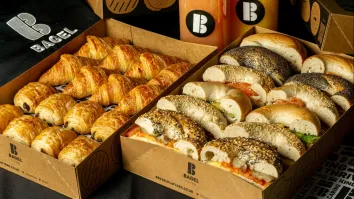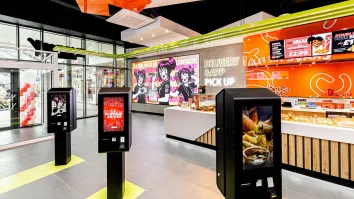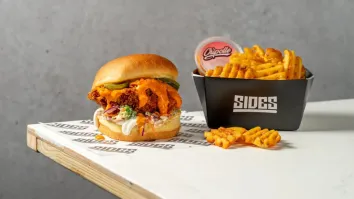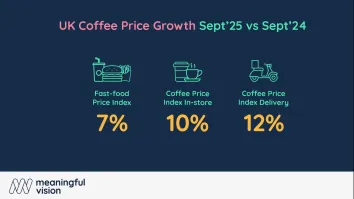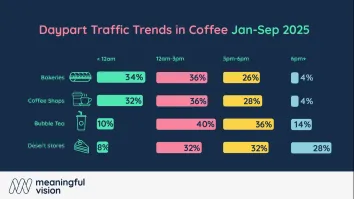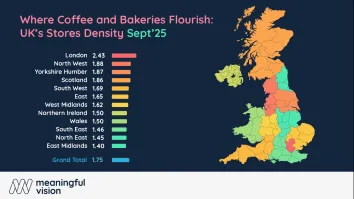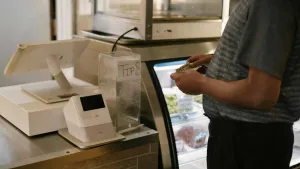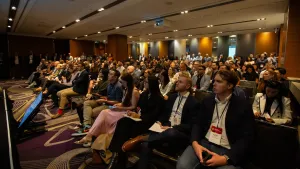
QSR market sees growth for chains, decline for independent outlets
Operators must focus on efficiency and experience this year to stay competitive.
Whilst bakery chains and chicken shops are gaining ground in the UK’s quick-service restaurant (QSR) sector, independent outlets, especially fish and chip shops and Asian restaurants, are set to experience further site closures this year.
In a quick Q&A ahead of her appearance at the QSR Media UK Redcat Conference & Awards 2025, Shannon Goldsmith, senior insight analyst at IGD, shared that businesses aiming for long-term growth should focus on boosting operational efficiency whilst balancing this with meeting or exceeding consumer expectations.
QSR Media: As a thought leader in the QSR space, what do you see as the most significant shifts happening in the industry right now?
Goldsmith: The QSR sector is diverse, and we are seeing that the sub-sectors within the market have very different experiences. Increased office footfall throughout 2024 and expansion into new day parts boosted the sales of food-to-go chains, particularly bakeries. However, this was offset by the decline in traditional fast food and takeaways and a suppressed coffee shop market.
Currently, bakery and chicken shops are set to be the short-term winners. This is boosted by the continued success of chains like Greggs and expansion into the UK from international chicken brands like Dave’s Hot Chicken and MB Chicken. On the other side of the market, independents are set to experience further site closures this year, especially Asian cuisine and fish and chip shops.
What do you think are the most important innovations in the industry right now?
Boosting efficiency is a key priority right now, and we are seeing lots of tech advancements to support this. Whilst we’ve seen tech be used to add theatre to QSR—think robot baristas and burger-flipping robots—the focus for tech is shifting from theatre to functionality. Whilst automation will be a useful tool for managing labour costs, the high investment required often isn’t offset by labour savings; Starbucks recently said this about their global operations.
Back-of-house tech and AI that bring meaningful change and cost savings through boosted efficiency will become a core part of sustainable growth. Some examples of this are McDonald’s plans to launch AI into restaurants that can boost order accuracy and identify potential equipment failures before they happen, saving lost time on remaking customer orders or waiting on repairs.
Similarly, Chicago-based chain Portillo’s has introduced AI to the drive-thru, which highlights when cars have been waiting for more than four minutes, allowing managers to move staff around to service the drive-thru. This has already cut 15 seconds off of the average drive-thru time, and the hope is to reduce this by a further 45 seconds.
In terms of menu innovation, the focus seems to be around drinks. Driven by social media, operators have been quick to jump onto trends like matcha, pistachio, tiramisu, and lavender. We’re really seeing operators make the most out of this NPD investment—spreading the flavours out as far as possible across the menu to cover both hot and cold drinks and into bakery and snack items too. With a growing trend towards iced drinks and unpredictable British weather making customers switch between hot and cold on an almost daily basis, making NPD fit into as many product categories and occasions as possible will drive more visits.
What challenges do you see are an immediate priority for the QSR industry?
Labour costs are a major issue for the entire UK food system, but away-from-home operators are especially impacted by their more labour-intensive operations. This, paired with increases in business rate relief, which will particularly impact independents, will keep inflation higher than previously expected—IGD is forecasting away-from-home inflation to average 5.2% in 2025 (vs. a previous forecast of 4%). Some of the larger chains have returned to focusing on value, but this will be a difficult proposition to deliver whilst managing such tight margins.
Another challenge for QSRs is the experience trend. Consumers are still planning on cutting their eating-out spending, although less so amongst higher-income than lower-income consumers. Where they are still eating out, we are continuing to see consumers prioritise the experience, spending quality time with family and friends, experiencing something different, and going out for the atmosphere. This is a harder need state for QSRs to deliver against than leisure sites or full-service restaurants. The challenge is repositioning themselves in the consumers’ minds as an extended part of an experience where they cannot deliver on all elements.
Looking forward, what trends or advancements do you believe will define the future of the QSR industry?
The QSR sector is one of the best placed in the away-from-home market to lead the way in automation and AI. The sector includes large international groups that can prioritise investments into this technology, so will see the benefits of efficiency and reduced, or redeployed, labour first, but this will open up doors for smaller chains and other sectors to take their learnings.
Loyalty continues to be another area where QSRs lead. The priority has really shifted from data collection to actionable insights as operators focus on the personalisation of offers. Loyalty is a core component of the consumer value equation, and QSR operators will only be ramping up their loyalty capabilities.
Targeting the travel sector is another growing trend we are seeing in QSR. Both air and rail passengers are up year-on-year (although rail is still below its pre-pandemic level). The captive audience in travel hubs, particularly airports, is typically more accepting of food and drink spending in airports, giving further motivation to target transport hubs for new sites.
What advice would you leave QSR brand leaders to navigate the current economic climate?
The speed at which the economic climate is changing is making it even more difficult for operators to navigate. As they look to position themselves for sustainable growth and success, key focus areas will be around boosting operational efficiency whilst balancing this with delivering on and above consumer expectations around experience to target more occasions.
Hear more from Shannon Goldsmith, senior insight analyst at IGD, at the upcoming QSR Media UK Redcat Conference & Awards 2025.


